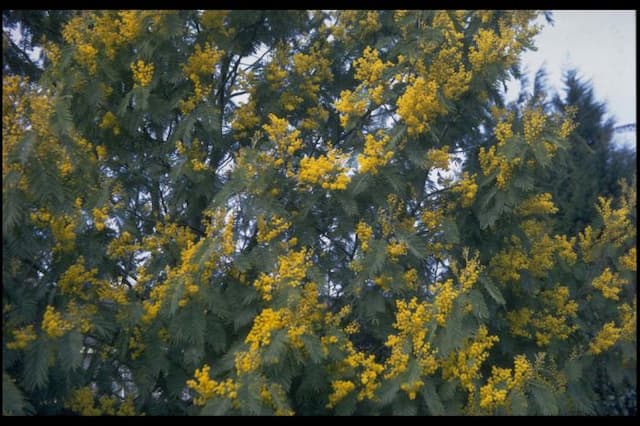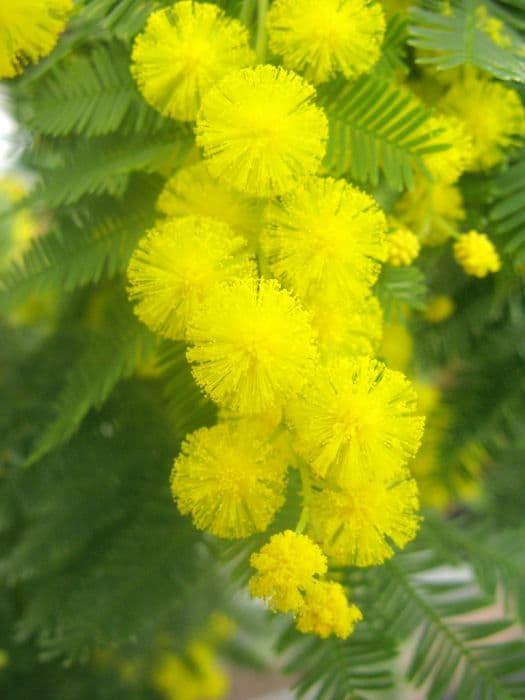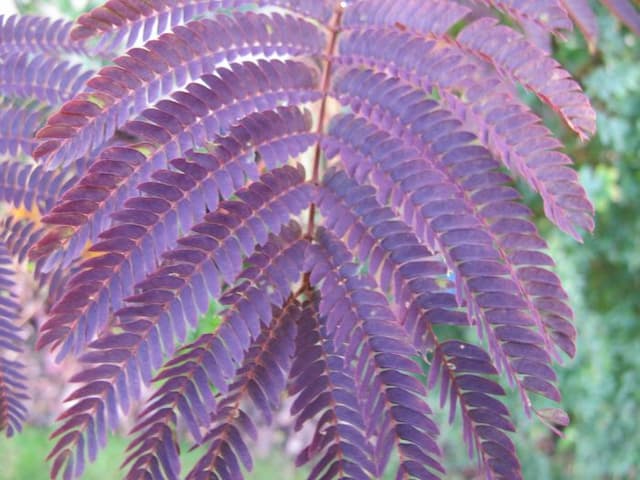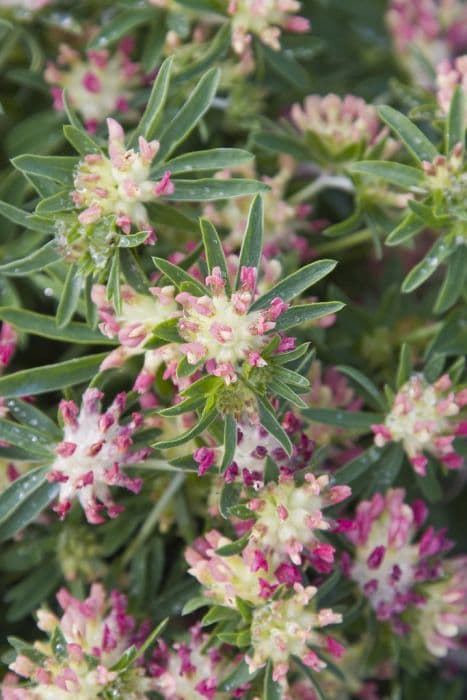Warminster broom Cytisus × praecox 'Allgold'
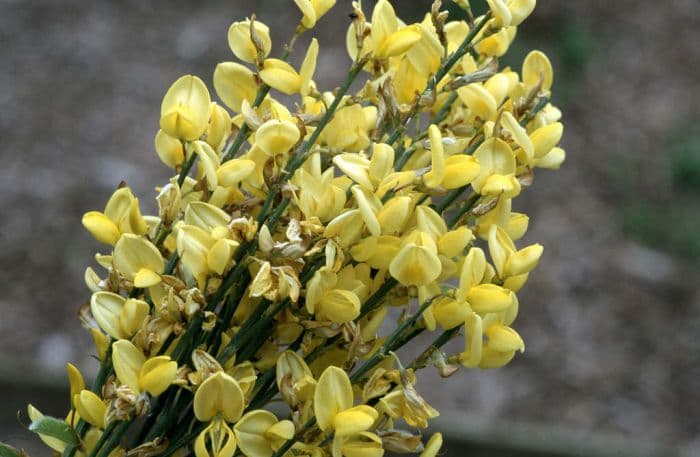
ABOUT
The plant known as 'Allgold' is a visually captivating shrub that boasts a vibrant display of yellow flowers which appear to gleam as if touched by gold. These blossoms are small and pea-like in shape, clustering together in racemes that add a vivid splash of color to the landscape. The foliage of 'Allgold' consists of slender green leaves that provide a delicate and fine-textured backdrop for the bright blooms. The leaves are compound, meaning they are composed of smaller leaflets arranged on either side of a central stem, giving them a feathery appearance. This growth habit allows for a dense and bushy form, which becomes a focal point when the plant is in full bloom. The overall impression of 'Allgold' is that of a radiant and cheerful plant, contributing a burst of sunshine to gardens with its abundant flowering habit.
About this plant
 Names
NamesFamily
Fabaceae
Synonyms
Warminster Broom, Allgold Broom
Common names
Cytisus × praecox 'Allgold'.
 Toxicity
ToxicityTo humans
Broom, including the variety Cytisus × praecox 'Allgold', can be toxic to humans if ingested. The plant contains alkaloids such as sparteine, which can affect the cardiovascular system and potentially cause symptoms such as nausea, vomiting, dizziness, headache, and in severe cases, can lead to arrhythmias or even respiratory failure.
To pets
Broom, including the variety Cytisus × praecox 'Allgold', is toxic to pets if ingested. The toxicity is mainly due to alkaloids like sparteine, which can cause similar symptoms in animals as they do in humans. Ingesting parts of the plant may result in vomiting, diarrhea, lethargy, abdominal pain, and more severe cases may cause heart issues and seizures.
 Characteristics
CharacteristicsLife cycle
Perennials
Foliage type
Deciduous
Color of leaves
Green
Flower color
Yellow
Height
4-5 feet (1.2-1.5 meters)
Spread
4-5 feet (1.2-1.5 meters)
Plant type
Shrub
Hardiness zones
6
Native area
Hybrid
Benefits
 General Benefits
General Benefits- Attractive Flowers: Cytisus × praecox 'Allgold', commonly known as Warminster broom, produces vibrant yellow flowers in late spring which add a striking color display to the garden.
- Drought Tolerance: Once established, Warminster broom is relatively drought tolerant, making it suitable for xeriscaping and low-water gardens.
- Low Maintenance: This plant requires minimal care, with no need for regular watering, fertilizing, or pruning, which makes it ideal for gardeners looking for low-maintenance options.
- Erosion Control: The dense root system of Warminster broom can help stabilize slopes and banks, preventing soil erosion.
- Attracts Wildlife: The flowers of Warminster broom can attract bees and butterflies, which are important pollinators for the garden ecosystem.
- Fast Growth: It has a fast growth rate that allows for quick establishment and filling in of garden spaces.
- Adaptable: Warminster broom can adapt to a range of soil types, although it prefers well-drained soils.
 Medical Properties
Medical PropertiesThis plant is not used for medical purposes.
 Air-purifying Qualities
Air-purifying QualitiesThis plant is not specifically known for air purifying qualities.
 Other Uses
Other Uses- Cytisus × praecox 'Allgold', commonly known as Broom, can be used for crafting brooms and brushes due to its strong and fibrous branches.
- The plant is often incorporated in floral arrangements, specifically in dried form, because it retains its shape and color well.
- Broom wood is used to make small wooden objects, like cabinet inlays or decorative boxes, because of its dense and fine-grain characteristics.
- The flexible stems of the Broom can be utilized in basket weaving, providing a unique yellow-green hue and adding strength to the baskets.
- In textile arts, fibers from Broom can be dyed and woven into fabric or used to create natural embroidery threads.
- The plant can serve as a larval food source for some butterfly species, therefore can be intentionally grown to support local butterfly populations.
- Due to its rapid growth and ability to fix nitrogen, Broom is used in land reclamation projects, helping to improve soil quality in degraded areas.
- Broom has been historically used in traditional craftsmanship, such as the making of small musical instruments where the wood's qualities are desired.
- The plant's colorful and dense foliage is utilized for privacy screens and hedges in landscaping.
- Gardeners sometimes plant Broom in wild gardens to create a habitat for beneficial insects, thereby contributing to biological pest control.
Interesting Facts
 Feng Shui
Feng ShuiThe Scotch Broom is not used in Feng Shui practice.
 Zodiac Sign Compitability
Zodiac Sign CompitabilityThe Scotch Broom is not used in astrology practice.
 Plant Symbolism
Plant Symbolism- Renewal: Cytisus × praecox 'Allgold', commonly known as Broom, flowers abundantly in the spring, symbolizing new beginnings and the renewal of life.
- Purity: The bright yellow flowers of the Broom are often associated with purity and cleanliness, perhaps because of their vibrant, fresh appearance.
- Humility: Broom plants are hardy and can thrive in poor soil conditions, which has led them to symbolize humility and the ability to prosper in adversity.
- Protection: In folklore, Broom was thought to protect against evil spirits and witches, thus it came to symbolize protection.
- Good Luck: It is a tradition in some cultures to include Broom in wedding bouquets or at the ceremony to bring good luck to the newlyweds.
 Water
WaterThe Scotch Broom 'Allgold' prefers soil that is kept evenly moist but not waterlogged. During the growing season, water the plant deeply once a week, providing about one gallon of water to ensure that the moisture reaches the roots. During periods of drought or high heat, increase the frequency to twice a week, monitoring the soil moisture level to avoid overwatering. In winter, reduce watering to every two weeks, allowing the top layer of soil to dry out slightly between waterings. It's important to ensure that the plant has good drainage to prevent root rot.
 Light
LightScotch Broom 'Allgold' thrives in full sun, where it can receive at least six to eight hours of direct sunlight daily. Planting it in a south-facing spot will ensure that it gets the maximum amount of sunlight necessary for its vibrant yellow blooms. Avoid placing it in deep shade, as this will result in fewer flowers and a less vigorous plant.
 Temperature
TemperatureScotch Broom 'Allgold' is hardy and can tolerate a wide range of temperatures. It performs best in temperatures between 60 and 75 degrees Fahrenheit but can survive in temperatures as low as 20 degrees Fahrenheit during dormancy in winter. To flower abundantly, it prefers the warmer end of its tolerance spectrum during the growing season.
 Pruning
PruningPrune Scotch Broom 'Allgold' right after it finishes blooming to maintain its shape and promote next year's blooms. Cut back about one-third of the length of the flowering stems to encourage new growth. Pruning should be done annually to keep the plant looking tidy and to remove any weak or dead branches.
 Cleaning
CleaningAs needed
 Soil
SoilWarminster broom, or Cytisus × praecox 'Allgold', thrives in a well-draining soil mix with added sand and organic matter to enhance drainage. The ideal soil pH for this plant is slightly acidic to neutral, ranging from 6.0 to 7.5.
 Repotting
RepottingWarminster broom generally does not require frequent repotting and can be done every 2 to 3 years to replenish soil nutrients. These plants prefer to not be disturbed if possible.
 Humidity & Misting
Humidity & MistingThe Warminster broom is adaptable to a wide range of humidity levels, but it typically prefers the moderate humidity found in outdoor environments, so specific humidity adjustments are usually not necessary.
 Suitable locations
Suitable locationsIndoor
Ensure bright light, minimal water, and no overpotting indoors.
Outdoor
Plant in full sun, well-draining soil, and shelter from strong winds.
Hardiness zone
6-8 USDA
 Life cycle
Life cycleThe Scotch Broom 'Allgold' begins its life as a seed, which, once germinated, develops into a seedling featuring the first pair of true leaves. It grows rapidly into a small shrub through the vegetative stage, where it develops many stems with compound leaves. During the flowering stage, usually in spring, 'Allgold' produces abundant golden-yellow flowers that are highly attractive to pollinators. After pollination, it enters the reproductive stage, setting seed pods that eventually dry and burst open, dispersing seeds for the next generation. In maturity, it may reach a height and spread of up to 2 meters and can live for several years if conditions are optimal. In the final stage of its life cycle, the plant senesces and dies, completing the cycle with seeds that have scattered, ensuring the continuation of the species.
 Propogation
PropogationPropogation time
Spring
The Warminster broom, known scientifically as Cytisus × praecox 'Allgold', is best propagated by semi-hardwood cuttings. This technique is usually performed in late summer, when the current year's growth has started to mature but is not yet fully hardened. To do this, you select healthy, non-flowering shoots of about 4 to 6 inches (10 to 15 cm) in length and make a cut just below a node. The leaves on the lower half of the cuttings should be removed, and the base of the cutting can be dipped in rooting hormone to encourage root development. The cuttings should then be placed in a well-draining potting mix and kept moist but not waterlogged. It's essential to maintain a high humidity around the cuttings, often achieved by covering the pot with a transparent plastic bag or placing it in a propagator. Roots typically develop in a few weeks, after which the new plants can be gradually acclimatized to outdoor conditions and eventually transplanted to their final location.
